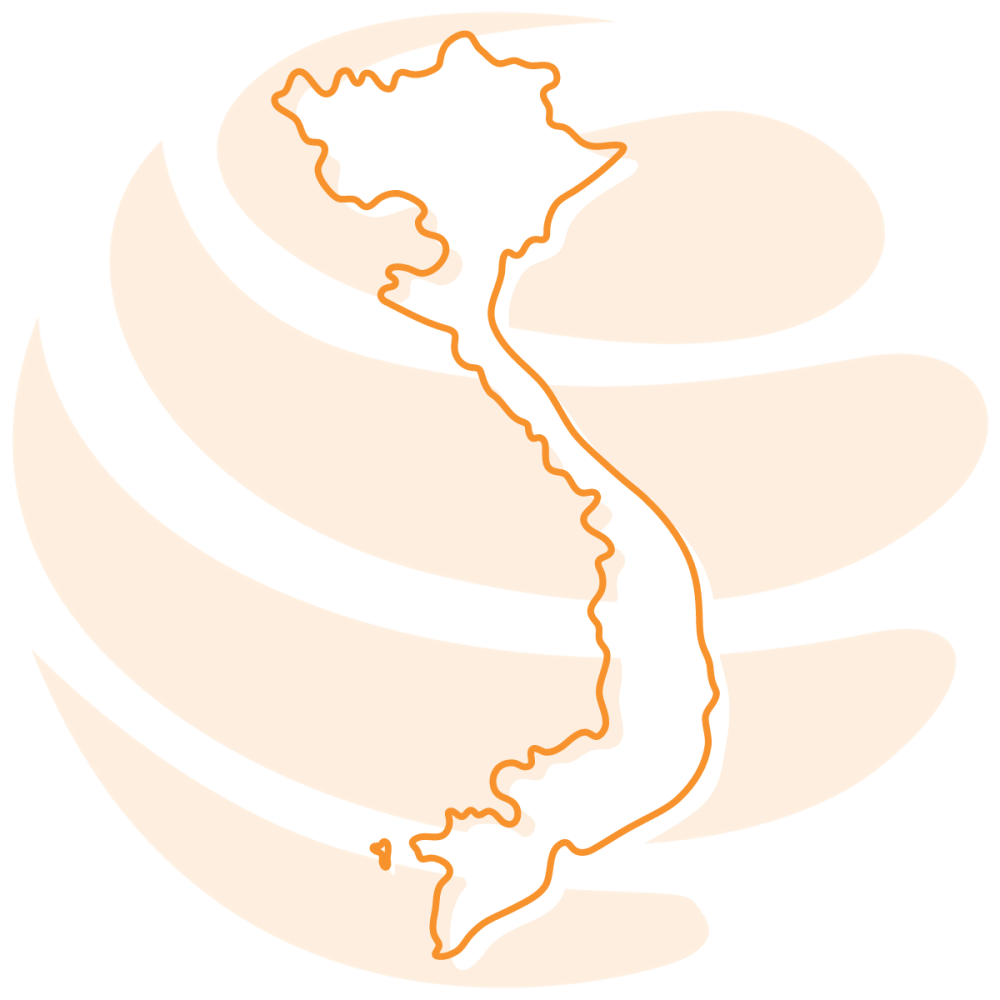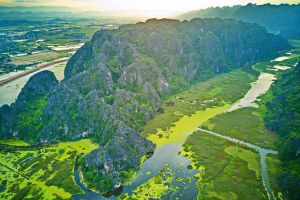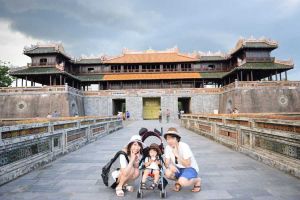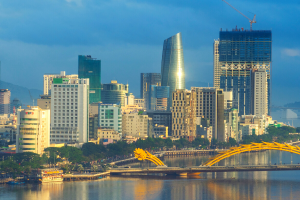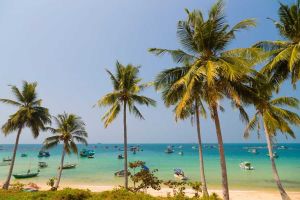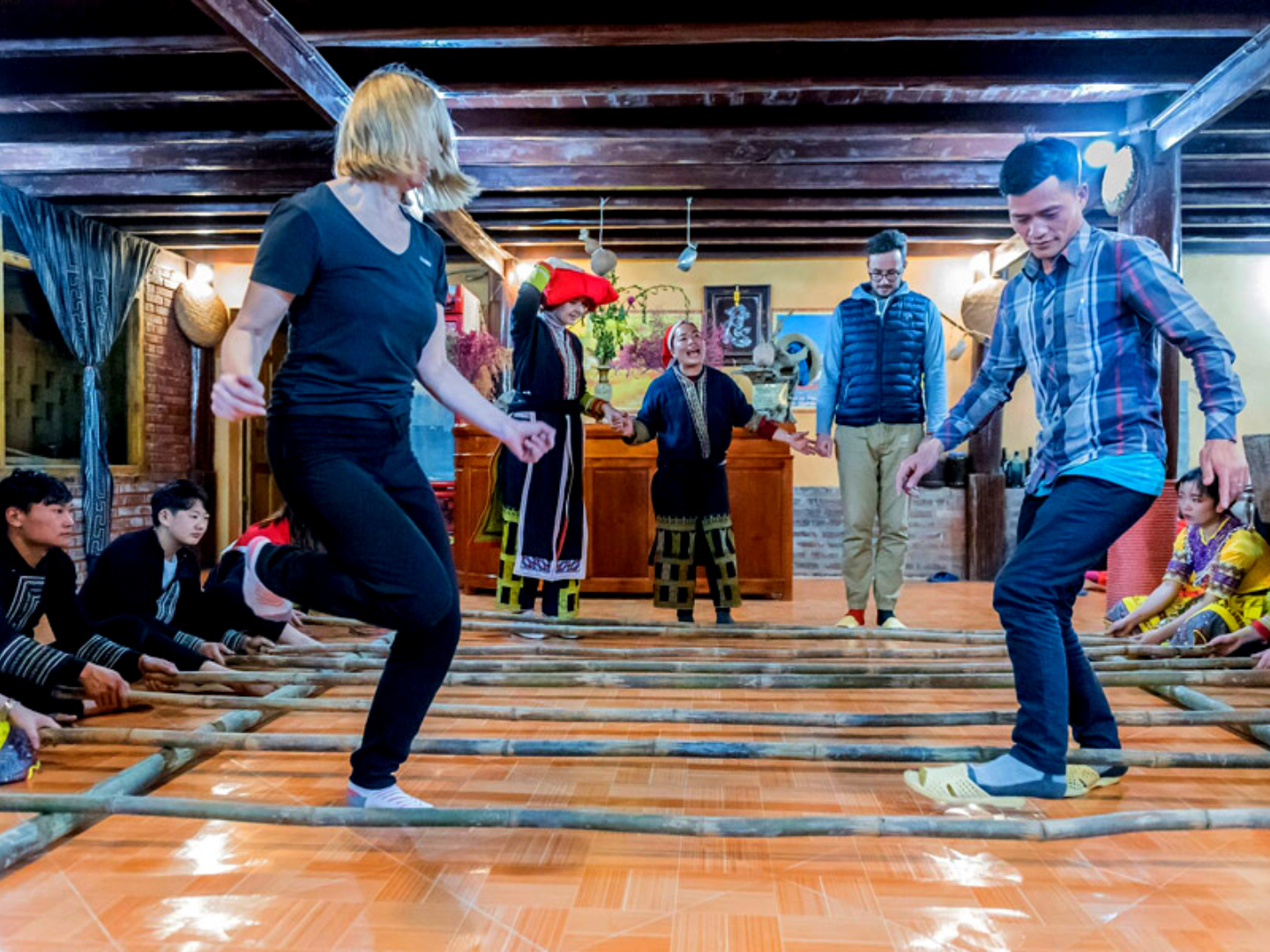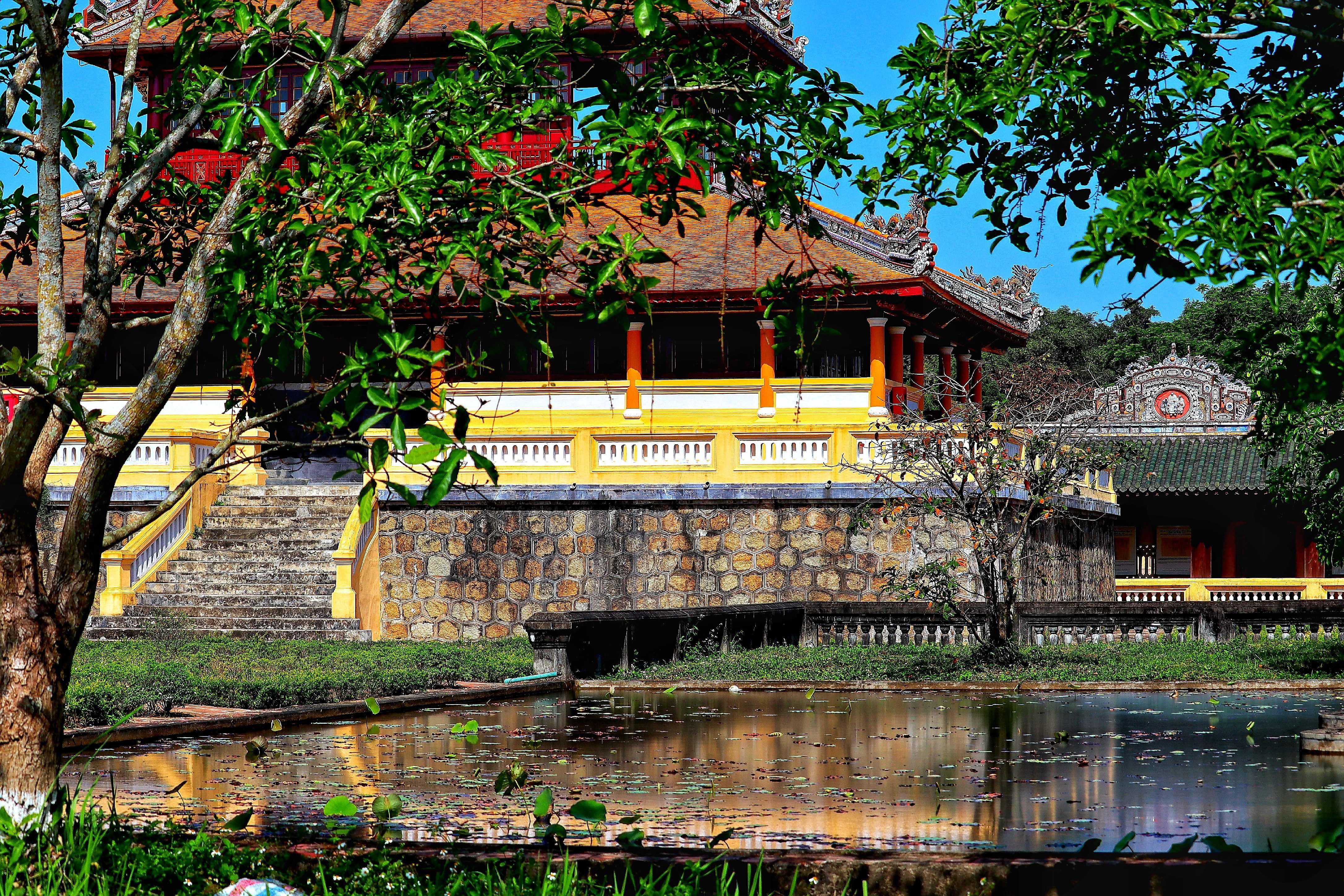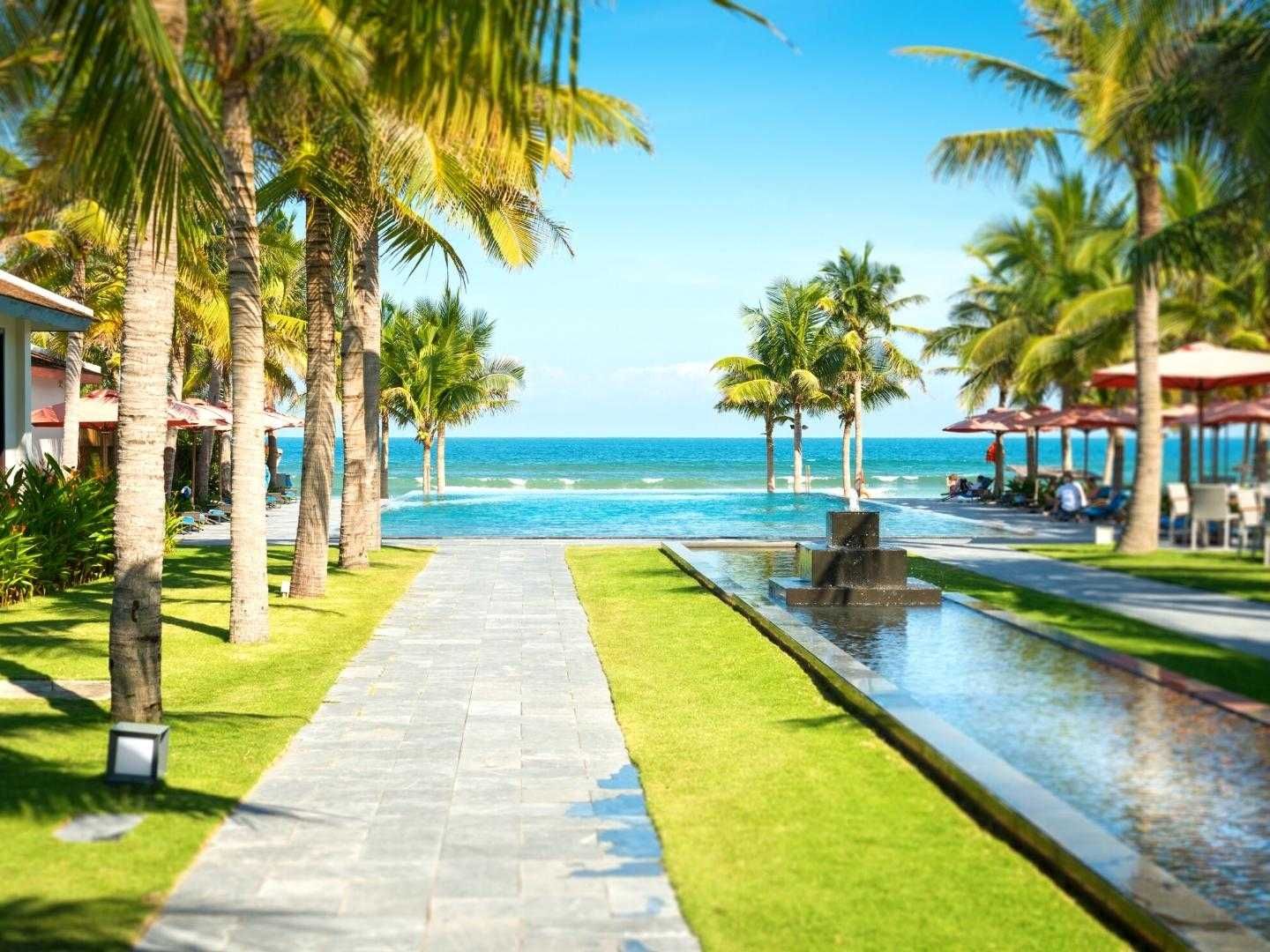Share This Article
The best time to visit Vietnam
Choose the season with the most favorable weather for your Vietnam trip.
Vietnam weather varies immensely between the individual regions, meaning that travelers can visit the country all year round. Of course, you must consider these differences and plan your stay in each specific part of Vietnam accordingly. Therefore, it’s always a good time to visit some parts of the country. The following tips should give you a clearer picture of when and where to go to maximize your chances for optimal weather during your voyage.
Geography of Vietnam
Vietnam is located in the southeastern part of Asia, more specifically - on the Indochina Peninsula. The country shares land borders with China, Cambodia, and Laos. The area of Vietnam is 331,212 km², ranking 66th in the world. Vietnam is 1600 km long and 50 to even 650 km wide. Vietnam’s population is approximately 97 million. On its eastern, southern, and southwestern sides, Vietnam is surrounded by the waters of the Gulf of Tonkin, the South China Sea, and the Gulf of Thailand. Over 75% of the land area is covered with highlands and mountains. The lands surrounding the Red River in the north and the Mekong Delta in the south are extremely fertile. They are connected by a narrow mountainous belt of Central Vietnam. The highest peak in Vietnam - Fansipan, also known as the Roof of Indochina, stands 3143m above sea level.
In terms of climate, Vietnam is truly diverse. For simplicity, we'll divide the country into four zones: North Vietnam, two regions in Central Vietnam and South Vietnam.
Vietnam is a remarkably diverse country in terms of climate and weather. This is on one hand the result of its significant North – South span, and on the other - of the country’s topography. About 75% of the country's area is covered by mountains and highlands, the rest being lowlands. For this reason, it is exceedingly difficult to talk about the average temperature values for individual months, or the average rainfall for the entire country.
In terms of climate, Vietnam can be divided into two climatic zones, with the border between them marked by Hai Van Pass ("Ocean Cloud Pass"). The northern part of the country lies on the edge of the tropical and temperate zones, while the South is in the humid tropical zone. The common features of both of those regions are periodically occurring monsoons, extremely high air humidity, high air temperature, significant rainfall, and typhoons.

The weather in North Vietnam
The climate in the northern regions of Vietnam is much cooler than that of the South for most of the year. The region features significant temperature differences throughout the year. Even 15 to 25°C differences between the hottest and coolest months can occur in some places. The diurnal temperature amplitudes are also quite notable. The coldest month of the year is January with an average air temperature of 13 - 14°C, and the warmest - July with an average temperature of 28°C. Similar to Europe, there are 4 seasons here: Spring, Summer, Autumn, and Winter.
The highest rainfalls in this region occur between May and September, while the months from November to April are relatively dry, apart from frequent drizzles during February and March.
Seasons in North Vietnam
Spring in Northern Vietnam spans from March to May. In April it starts to get hotter and in May the average temperature already reaches 30°C. It is relatively warm, but not yet as humid and stifling as in summer.
Summers in the northern part of the country are hot, muggy, and rainy. Maximum temperatures reach 40°C, and air humidity can exceed 90%. In August and September, frequent storms, torrential downpours, and typhoons occur.
Autumn is the second most enjoyable season of the year in northern Vietnam after spring. Temperatures drop to an average of 20 - 28°C. The rains are not as intense anymore, and the air humidity drops down as well.
The winter weather in North Vietnam is humid and cool. The average air temperature during this period is around 13 - 14°C, although it can be even cooler than that. The temperatures in December and January can drop below 10°C, and when combined with the extremely high air humidity (even up to 90%), can give you a feeling of penetrating cold, leading to shivering and numbness. The temperature in the mountain regions of Sapa and Dien Bien Phu often drop even below 0°C. When visiting Sapa and the surrounding areas during the wintertime, you might even witness snowfall. For the Vietnamese from Hanoi and other cities, it is an opportunity to experience snow and take pictures. Meanwhile, this is considered a rather unfortunate phenomenon for the residents, especially ethnic villagers.
When to visit North Vietnam?
If you plan to visit North Vietnam and places such as Sapa, Ha Long Bay, or Hanoi, it is best to go here from mid-September to mid-December, when the temperatures are not so bothersome. During this time, intense short rains may occur. Another suitable time of the year to visit North Vietnam will also be Spring (March – April). At the time, temperatures are not that high, and you don't have to worry about heavy rains either. Summer can be terribly hot, humid, and rainy, so it's better to skip trips during this period.
North Vietnam is best appreciated through attentive traveling, and we provide the perfect itinerary and service to help you experience it. Let us know what you’re looking for, and we’ll give you a side of North Vietnam you can call your own.
Remember the following tips when planning your trips to North Vietnam!
- These are the only few places in Vietnam (especially Sapa!) where you can sometimes see snowfall in the winter. However, this is not the greatest difficulty for travelers. In reality, a lot of people go to Sapa, Ha Giang, and Mai Chau mainly to learn about the interesting cultures of local ethnic minorities and to enjoy the breathtaking views of mist and clouds descending low. Busy crowds obscuring the beautiful views is a much bigger problem here.
- On the other hand, lovers of mysteries and fairy-tale scenery can feel at home here.
- The best time to visit Sapa, Mai Chau or Ha Giang to take photos of the legendary rice terraces is from the beginning of September to the beginning of November. In September, the rice is still lush green; while in October - the beginning of harvest season, the layers are already golden yellow.
- The majestic Ha Long Bay is beautiful for most of the year.
- The bay shows its full beauty when bathed in the sunrays. Therefore, you should avoid traveling to the area in the middle of the North’s winter. That’s when the problem is not only frequent clouds but also fog tremendously limiting your chance to admire the picturesque scenery.
- In the period from mid-December to the end of February, it is cold here. Really cold! However, this situation is not because of negative temperatures. The temperature in the capital of Vietnam only drops to around 10 ° C. The culprits here are heavy cloud coverage and drizzle, combined with gentle but constant gusts of wind. Such a combination of weather factors causes the perceived temperature to be much lower. The fact that most buildings, such as restaurants, bars, etc. are not heated, does not help.
- Therefore, when going to Hanoi or Ninh Binh in the winter, you should equip yourself with warm, waterproof clothes and raincoats, or at least plastic, disposable rain ponchos that will protect you and your loved ones from feeling the biting cold.
- Also, be sure to dry all the soaked clothes, either with air conditioning in your hotel room or with the hotel's laundry service, if a clothes dryer is available.
- At the opposite end of the weather scale in Hanoi and Ninh Binh is the period from mid-May to the end of July. During this time, the temperatures reach between 32 - 40 ° C, and high air humidity and lack of wind make the perceived temperature even higher. You should then remember about regular hydration of the body, avoid places that are particularly sunlit and follow the local custom - the Vietnamese siesta. However, this does not mean that you should go to bed at noon, as in the countries of the Mediterranean Basin. The time between 11:30 and 13:30 should be spent on a meal, enjoying one of the North Vietnamese delicacies and resting with a glass of strong, local coffee or iced tea.
- The elderly and travelers who have circulatory problems should avoid staying out in the intense heat.
Planning a trip to Vietnam?
With MakeYourAsia, your dream trip comes with stress-free planning, authentic experiences, and worry-free exploration. Simply leave everything to us!
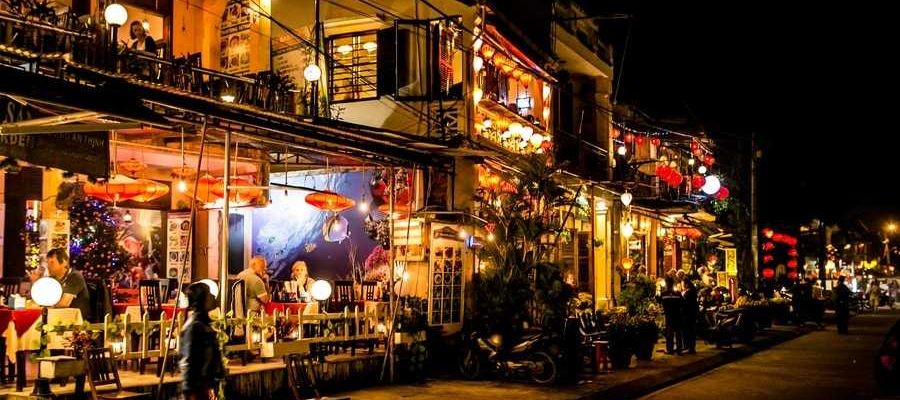
The weather in Central Vietnam
As you might expect, the climate of central Vietnam is a unique cocktail of weather, combining the features of both the northern and southern regions.
This part of the country should be divided into two sub-regions, i.e., the area from Thanh Hoa province to the northern side of the Hai Van Pass and the area from the southern end of the Pass to Phu Yen province. As you can see, the Hai Van Pass plays a huge role here. As the Pass crosses over the spur of Truong Son Mountain range, it blocks the air currents that bring monsoons to the northern region and serves as a divider of the two areas’ weather.
Therefore, when traveling between Hue and Da Nang, you can sometimes find yourself in situations where the sun is shining and it is hot on one side of the pass, and on the other side it is raining and much cooler.
Regions in Central Vietnam
The climate of this region is a smooth combination of the typical North Vietnamese climate - four seasons plus cold rains with a drizzle - and the tropical - monsoon in the vicinity of Hue. For this reason, below we will focus on the area from Quang Binh province to Lang Co. beaches - south of Hue city.
This region has an average annual temperature of around 25ºC; however, at the peak of the summer season, dry, hot winds blowing from Laos can bring temperatures exceeding 40ºC here.
In the areas located south of the Hai Van Pass to the province of Phu Yen, there are two very clearly demarcated seasons: the dry season, lasting for 8 months - from January to August, and the rainy season, occurring from September to December.
The Da Nang area is characterized by an average annual temperature of around 25°C, while in the Phu Yen region it is 26.5°C.
When to visit Central Vietnam?
The northern region from Thanh Hoa to Hue
The best time to visit the caves of Quang Binh province is during the (almost) rainless season between April and August. It rains here sporadically, and the rainfall is small and short-lived. The average temperature is then around 24 - 25°C.
It is best to visit the area of Hue, Lang Co beaches, and the former Demilitarized Zone (Quang Tri province) from March to August. It rains very sporadically here, but you have to bear in mind that the heat can get up to 40 ° C during this period. Avoid planning multi-day trips around this region from August to January as heavy rainfall, and in some places even local flooding, may force you to change your tour route. Temperatures during this period are around 19°C on average, but evenings can be much cooler.
The southern region from Da Nang to Phu Yen
During the rainy season, areas from Da Nang to Phu Yen are sometimes affected by typhoons. So, if you plan to travel to this region from September to December, you should have a plan B for safety. For example, you can go by air to the southern part of the temples.
Based on experience - the best months to travel to Da Nang, Hoi An, Binh Dinh, and Phu Yen are from January to April and August to September. Summer months such as May, June, and July are a bit less picturesque because some of the vegetation dries up after the end of the rainy seasons.
It is worth mentioning that with good planning and a bit of flexibility, this part of the country is also beautiful in October and November – when the temperature is cooler here than in previous months. Those who hate heat can take this fact into account when planning their trip. In this case, one should only - as we mentioned - remember about possible heavy rainfall and local flooding, especially in the vicinity of the town of Hoi An.
Keep the following tips in mind when planning your travels in Central Vietnam!
- Due to the heat that prevails in the region from Da Nang to Phu Yen during the dry season, you should avoid prolonged sun exposure and the consumption of alcoholic beverages during the day.
- If, on the other hand, your trip falls during the rainy season, remember to bring rain ponchos and quick-drying clothes. Do not carry your passport as it can get wet easily - leave it in the safe in your hotel room. If there is a message that a typhoon may strike the coast, stay in one of the big cities, or change your travel plans. You can always go to another region of the country; for example, spend a few days exploring Da Nang, or visit the neighboring Cambodia.
Fall in love with Vietnam's charming cities
Whether you're a beach lover, history buff, or adventure enthusiast, there's always something for you here.
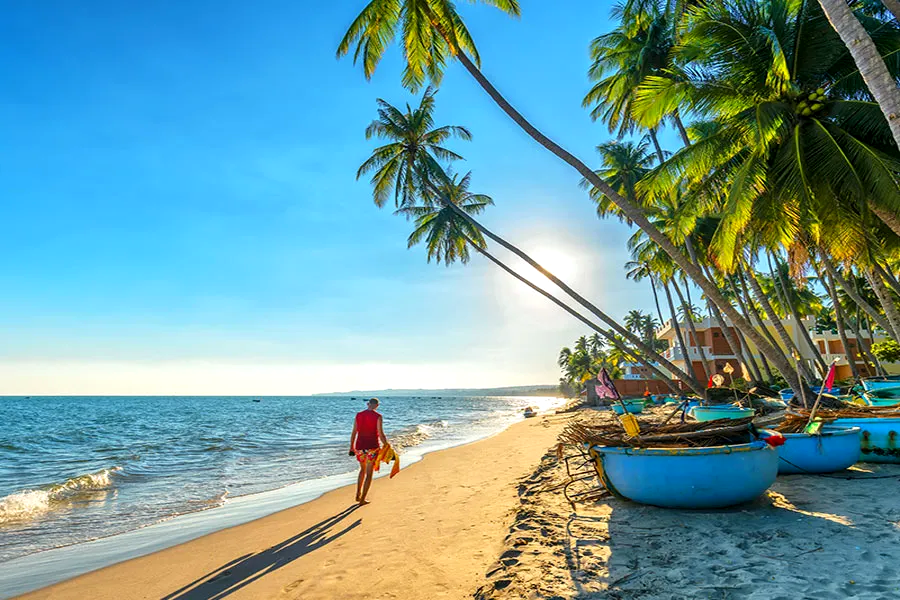
The weather in South Vietnam
Vietnam’s southern part lies in the wet tropical climate zone. It is very warm and humid all year round, as the air temperature does not drop below 20°C. In the coldest month – December, the average air temperature is around 23°C, and in the warmest months – from March to May, the temperature is around 35°C. The temperatures may often be even higher, especially at noon.
In the southern part of the country, there are two distinct seasons: the dry season, lasting from the end of October to the beginning of May, and the rainy season - from May to the end of October.
Seasons in South Vietnam
The dry season lasts from late October to late April. At this time of year, it is hot, but also sunny and dry. There is little to no rainfall and air humidity is around 50%. Single rainy days may occur in November and December.
The rainy season starts in May and lasts until the end of October. During this period, rainfall is very heavy, and it rains almost every day. The rains, however, are not long-lasting and occur in the afternoons. You should therefore expect short and heavy downpours rather than all-day rainfall or drizzle. Typically, the beginning and ending periods of the season are less rainy, while June and September are the months with the highest precipitation.
The rainy season is also cooler than the dry season. The average temperature drops to 30°C, and some days it can get even cooler.
When to visit South Vietnam?
If your destination is in the southern part of the country, just like Saigon, Mekong Delta, Mui Ne, or Phu Quoc, then it's best to plan your trip during the dry season, i.e., the months from October to the beginning of May. However, this does not mean that you cannot go there in the rainy season. Just keep in mind there are often heavy afternoon downpours, which do not last too long – usually just 30 – 60 minutes. If you are a kitesurfing fan, then Mui Ne or Cam Ranh are the perfect destinations for you. Kitesurfing is available all year round, but the best weather conditions will be from the end of October to the end of March.
Experience South Vietnam in style with a luxury private tour that can be completely customized to your travel needs and interests. Whether you are craving some sunshine by the beach or a cultural travel experience, South Vietnam can offer it all.
Keep the following tips in mind when planning your South Vietnam trips!
- No matter which locations in Southern Vietnam are on your sightseeing list - the advice to keep in mind is similar. Whether you plan to lounge on Nha Trang, Vung Tau or Mui Ne beaches, see the hundred faces of Saigon on a motorbike tour, or dive deep into the coconut palm jungle of the Mekong Delta, our advice is very similar here.
- First: regardless of the season you intend to travel in this part of the country - prepare sunscreen that is comfortable for your skin, a comfortable hat, and light clothing. Both in the dry and rainy seasons, it is hot here; the only difference is that it rains here every day for six months, and almost never for the rest. You should also stay hydrated and avoid sunny places.
- Second: The rainy season is not an obstacle to exploring the southern part of Vietnam. Although rainfall can occur daily, it is short-lived. The rain falls at about the same time every day, so you can avoid getting wet by spending time inside local restaurants, tasting the delicacies of the local cuisine.
- Finally, it is worth adding that due to the geographical proximity, we recommend combining visiting South Vietnam with interesting places in Cambodia.
Weather in Vietnam - what should you be aware of?
- When going to Vietnam, you should remember both remarkably hot temperatures and extreme air humidity, which in combination can result in quite unpleasant climatic conditions. In such a climate, it is crucial to protect against the sun, overheating and dehydration.
- It is worth taking light, cotton, and airy clothes with you, as well as a rainproof pelerine in case of an unexpected downpour. On the other hand, if you are going to the northwestern region, to the Sa Pa area or to the mountains in the winter, you will need warmer clothes and shoes, because temperatures can drop below 0°C, and occasionally there might be snowfall here.
- When planning your seaside stay in the south of Vietnam (Hoi An, Nha Trang, or maybe Phu Quoc) from July to December, you should keep in mind that storms may occur over the South China Sea at that time, manifesting in coastal towns with rains lasting for 2-3 days.
- It is best to plan your sunbathing in Hoi An and Da Nang from the end of February to July. Pleasant weather here is also present until the end of September. The temperatures start to drop in October. The worst months to visit this part of Vietnam are from November to January.
- Climate changes in Vietnam, especially in its southern part, has been very visible in the recent years. There are more anomalies, e.g., 3 days without rainfall during the rainy season may occur all of a sudden, while, on the other hand, a short, unexpected rainfall might take place in the middle of the dry season.
- Individual experiences of people who visited Vietnam for a brief period should not be trusted, as they are irrelevant to the gradually shifting climate here. The weather profiles in Vietnam have changed every year over the last 4 years, so the fact that someone was in Mui Ne in July 2018 cannot indicate what the weather will be like in July 2022 or 2023.

The best time to go to Vietnam: Summary
We can say that any time of the year is good for a trip to Vietnam and there will be no exaggeration. It all depends on where you are going. When it is rainy and cool in the northern part of the country, you can still enjoy the beautiful and sunny weather in the southern part of Vietnam.
Remember that climate change occurs all over the world and is difficult to predict - that is why we are updating this guide so thoroughly! Tell us which Southeast Asian countries you want to visit, and we will help you choose the right date and route!
Why travel with MakeYourAsia?


